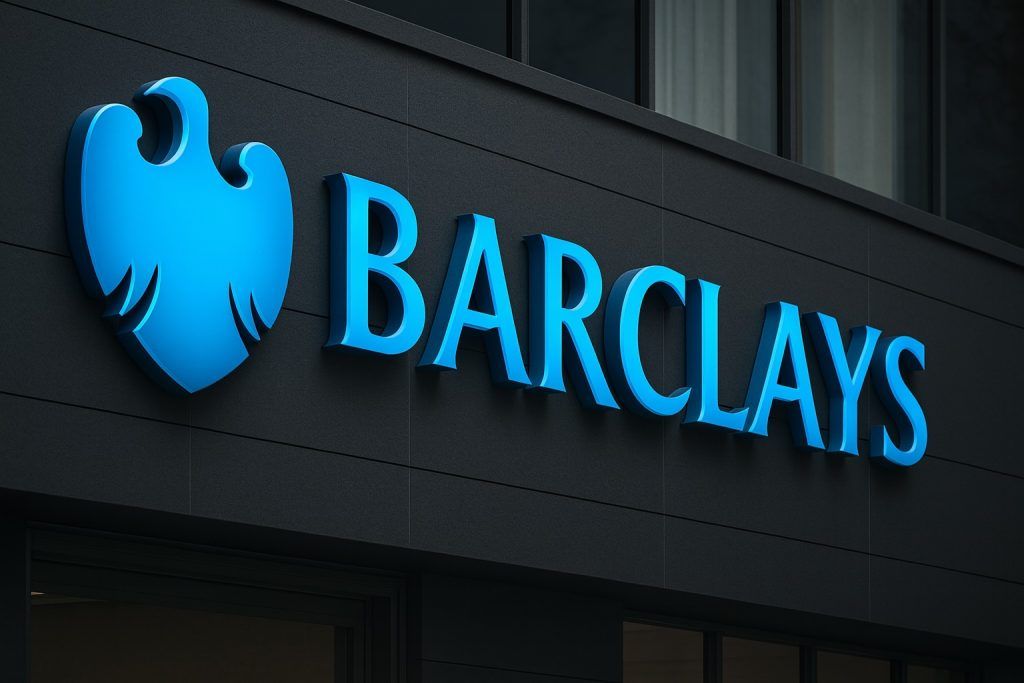November 18, 2025
Yum! Brands (NYSE: YUM) is in the middle of one of its biggest strategic pivots in years, as management weighs a potential sale of Pizza Hut while doubling down on faster‑growing, Gen‑Z‑friendly brands like Taco Bell and KFC. At the same time, convenience‑store giants are being floated as surprising would‑be buyers, and Wall Street analysts are steadily turning more positive on the stock. [1]
Fresh headlines on November 18 – from institutional investors increasing their YUM stake to new franchise opportunities in India and aggressive expansion plans in China – are giving investors and industry insiders new reasons to pay attention.
Pizza Hut’s identity crisis: from “most recognizable” to strategic question mark
Earlier this month, Yum! Brands formally launched a strategic review of Pizza Hut, saying it is exploring “a range of strategic options” to help the brand reach its full potential and maximize shareholder value. The company has hired Goldman Sachs and Barclays as financial advisers and has not set a deadline for the review, stressing there is no guarantee it will result in a transaction. [2]
Pizza Hut’s weak performance is the key driver. In Yum’s third quarter, global system sales at Pizza Hut were flat to slightly down and same‑store sales slipped about 1%, even as the wider Yum portfolio grew revenue 8% to roughly $1.98 billion and boosted adjusted EPS 15% year‑over‑year to $1.58. [3]
In the U.S., the picture is tougher: Pizza Hut has now logged seven straight quarters of same‑store sales declines, including a 6% drop in the third quarter of 2025, while system sales in the market fell 7%. [4] According to Reuters, the chain now contributes only about 11% of Yum’s operating profit, versus roughly 38% from Taco Bell’s U.S. business, highlighting how much the balance of power inside Yum has shifted. [5]
A widely shared analysis of the situation – first published under the headline “One of America’s Most Recognizable Restaurants Explores Sale Amid Identity Crisis as Yum! Brands Doubles Down on Gen Z Strategy” – frames Pizza Hut’s troubles as a brand caught between nostalgia and modern expectations. The chain still carries powerful name recognition, but it has struggled to stand out in a crowded delivery‑and‑value market dominated by players like Domino’s, which has leaned heavily into aggressive promotions and digital ordering. [6]
Yum pivots toward Gen Z – and Taco Bell is the star
If Pizza Hut is the laggard, Taco Bell is the engine. Yum’s Q3 results and subsequent media coverage show Taco Bell U.S. same‑store sales up around 7% in the quarter, driven by sharp value plays like its $3 burrito offerings and a steady stream of menu innovation. [7]
Yum executives have repeatedly highlighted Taco Bell’s success with younger, price‑sensitive consumers, positioning the brand as a core pillar of the company’s broader Gen Z strategy, which also includes experimental formats like the Live Más Café concept and digital‑first loyalty initiatives. [8]
KFC, particularly outside the U.S., is another bright spot. Q3 system sales at KFC grew mid‑single digits globally, and in the U.S. the chain posted its first positive same‑store sales quarter in six quarters. [9] Against that backdrop, slimming down the portfolio by offloading a slower‑growing Pizza Hut is increasingly being framed as a way to make Yum a more focused, higher‑growth story anchored in Taco Bell and KFC.
Strategic review: what Yum has actually said
In its November 4 press release, Yum described Pizza Hut as a “beloved global brand” but acknowledged that its performance “indicates the need to take additional action” that may be better executed outside of Yum’s current structure. The company emphasized three points: [10]
- The review is “formal” and wide‑ranging, covering multiple potential strategic alternatives (which investors broadly read as including a sale, spin‑off, or partnership).
- There is no set timetable or assurance that the process will result in a deal.
- Pizza Hut will continue focusing on near‑term business priorities during the review.
External commentary has gone further. A Reuters Breakingviews analysis, for example, estimates Pizza Hut could be worth around $3.4 billion based on projected 2025 operating earnings of about $340 million and a discounted earnings multiple relative to peers – proceeds that could be redeployed into buybacks or growth at KFC and Taco Bell. [11]
That same commentary underlines the operational challenge: Pizza Hut’s contribution to Yum’s operating profit has already fallen from roughly 17% in early 2023 to about 11%, and the brand’s sprawling franchise base – around 20,000 restaurants globally – makes a turnaround both expensive and complex. [12]
Could a convenience store chain buy Pizza Hut?
One of the more intriguing storylines to emerge from the Pizza Hut saga is the idea that a convenience‑store operator could become the buyer.
In a November 13 column for C‑Store Dive titled “Fueling Up: Pizza Hut might be up for sale. Could a c‑store chain take a slice?” reporter Brett Dworski argues that what once seemed far‑fetched now looks increasingly plausible. [13]
His case rests on three big trends:
- C‑stores are acting more like QSRs. From fried chicken to made‑to‑order sandwiches and salads, retailers are investing in staff, equipment and full foodservice programs designed to match or beat traditional quick‑service restaurants (QSRs). [14]
- RaceTrac’s Potbelly deal reset expectations. In September, RaceTrac agreed to buy roughly 450 Potbelly sandwich shops for about $566 million, effectively acquiring a full‑fledged restaurant chain rather than just adding an in‑house program. That deal, Dworski notes, shows that c‑store operators are willing to write big checks for established food brands. [15]
- Big, acquisitive players need a flagship food brand.
- Alimentation Couche‑Tard (Circle K’s parent), with more than 17,000 c‑stores worldwide and a history of pursuing transformational deals, lacks a marquee QSR banner despite ramping up its food focus. [16]
- 7‑Eleven has developed its own QSR concepts like Laredo Taco Company and Raise the Roost but has struggled to win a strong food reputation in the U.S., making a bolt‑on acquisition like Pizza Hut an intriguing option. [17]
There are obvious hurdles. Pizza Hut’s nearly 19,800 restaurants worldwide – including roughly 6,500 in the U.S. – would require a multi‑billion‑dollar deal and enormous integration work, far beyond what most c‑store operators have attempted. [18] Even Dworski concedes that a sale to another restaurant conglomerate or private‑equity firm is still the most likely outcome.
But the fact that serious industry voices are even entertaining a c‑store buyer underscores how fluid the line between gas stations and fast food has become.
Analysts turn bullish: TD Cowen upgrade and rising price targets
While Pizza Hut’s future remains uncertain, Wall Street sentiment on Yum’s stock has been moving in a clear direction: up.
On November 17, TD Cowen analyst Andrew M. Charles upgraded Yum! Brands from Hold to Buy and raised his 12‑month price target from $162 to $173, according to a Benzinga summary of the firm’s top upgrades for Monday. Yum shares had closed at about $149 ahead of the call. [19]
Charles praised Yum’s move to review strategic options for Pizza Hut, suggesting that a divestiture would leave investors with a faster‑growing portfolio “anchored” in Taco Bell U.S. and KFC International, where sales trends are stronger and margins higher. [20]
Also on November 17, Stifel raised its price target on Yum from $148 to $160, according to a MarketScreener summary of recent analyst actions. [21] Earlier in November, multiple firms – including Evercore ISI, Barclays, Argus and Goldman Sachs – also nudged their targets higher into a broad $155–$180 range as they updated models for the Pizza Hut review and Yum’s Q3 beat. [22]
Consensus data compiled by sites like StockAnalysis and MarketScreener now show Yum with a “Buy/Outperform”‑leaning rating, with an average target price in roughly the mid‑$160s. That implies high‑single‑digit to low‑double‑digit upside from recent trading levels around $148 per share. [23]
November 18: new catalysts from investors, India and China
Today’s news adds several fresh angles to the evolving Pizza Hut and Yum story.
1. Creative Planning boosts its stake in YUM
A new MarketBeat report on November 18 highlights that wealth manager Creative Planning increased its position in Yum! Brands by 4.4% in the second quarter, bringing its holdings to 111,144 shares worth about $16.47 million at the time of the filing. The article notes that, in total, institutional investors and hedge funds now own more than 82% of Yum’s stock. [24]
While this is backward‑looking (based on 13F filings), the disclosure underscores that large, long‑term investors are still adding to YUM even as the Pizza Hut review introduces uncertainty.
2. Indian Railways opens the door to KFC and Pizza Hut at stations
In India, shares of Devyani International and Sapphire Foods – both major franchise partners for KFC and Pizza Hut – climbed up to 5% in Monday’s trade after a Ministry of Railways circular signaled that Indian Railways may allow “Premium Brand Catering Outlets” at stations. Brands specifically mentioned include McDonald’s, KFC, Pizza Hut, Baskin Robbins and others. [25]
According to Moneycontrol’s report, the new outlet category will be awarded via e‑auction, with five‑year tenures similar to other station stalls. Sapphire Foods currently operates more than 500 KFC and over 300 Pizza Hut outlets in India, while Devyani runs more than 700 KFC and 600+ Pizza Hut locations in the country – a footprint that could benefit significantly from railway‑station exposure if deals are signed. [26]
For Yum shareholders, the move underscores how Pizza Hut’s fate is not just a U.S. story: franchisees worldwide are still expanding and could see new growth channels even as the parent company considers selling the brand.
3. Yum China lays out aggressive KFC and Pizza Hut expansion
Meanwhile in China, Yum China – a separate, listed company that operates KFC and Pizza Hut there – used its recent investor day in Shenzhen to unveil ambitious expansion goals. Reuters reports that management aims to increase KFC’s outlet count by about one‑third to more than 17,000 stores by 2028 and to add more than 600 net new Pizza Hut locations per year over the same period. The company also plans to double Pizza Hut’s operating profit in China by 2029compared with 2024. [27]
Although Yum China is independent of Yum! Brands, the plans show that Pizza Hut remains a powerful growth platform in some markets, even as it struggles in the U.S. That complicates the calculus for any global sale or spin‑off, since buyers will need to account for a brand that is weak in some regions but thriving in others.
What a Pizza Hut deal could mean for Yum, buyers and competitors
For Yum! Brands
If Yum ultimately sells Pizza Hut, the company would likely look leaner and more growth‑focused:
- Portfolio mix: With Taco Bell and KFC driving a larger share of earnings, Yum could be valued more like other high‑growth QSR operators rather than a mixed bag that includes a struggling pizza chain. [28]
- Capital allocation: Proceeds from a sale – pegged by some analysts around the mid‑single‑billion‑dollar mark – could fund buybacks, debt reduction or incremental investment in Taco Bell development and digital. [29]
However, Yum would also lose a globally recognized brand and a diversified revenue stream in a category (pizza) that has traditionally held up well in economic downturns.
For a convenience‑store buyer
For an operator like Couche‑Tard or 7‑Eleven, acquiring Pizza Hut would be transformative – and risky:
- Upside: A flagship QSR brand could turbo‑charge foodservice credibility, drive higher traffic and justify investments in larger, more food‑centric store formats. [30]
- Challenges: Integrating nearly 20,000 restaurants, many outside the c‑store footprint, while aligning franchise economics and brand standards, would be a monumental task. Any buyer would have to decide whether to keep dine‑in restaurants, pivot harder into delivery, or focus on co‑located units at forecourts and travel centers. [31]
For Pizza Hut and its franchisees
Franchisees worldwide are already navigating shifting consumer habits, rising labor costs and evolving delivery economics. A sale could bring:
- New capital and operational ideas, especially if the buyer is a growth‑minded retailer or restaurant group.
- Short‑term uncertainty, as contracts, support structures and technology platforms are renegotiated or re‑aligned under new ownership.
Some regions, like China and India, may continue to expand rapidly regardless of who owns the master brand, thanks to strong local demand and franchisee investment. [32]
Key things to watch after November 18
As of today, the Pizza Hut story is still in its early innings. Over the coming weeks and months, these developments will matter most:
- Any hints from Yum on strategic‑review progress, including whether the company leans toward a full sale, partial deal, or no transaction at all. [33]
- Signals from potential buyers, including c‑store operators, private‑equity firms or rival restaurant groups, via media leaks or analyst commentary. [34]
- YUM share performance vs. analyst targets, especially as investors digest the TD Cowen upgrade, Stifel’s higher target and broader consensus expectations. [35]
- Execution in key growth markets, such as Indian railway stations and Yum China’s lower‑tier city expansion plans for KFC and Pizza Hut. [36]
For now, Pizza Hut’s strategic review is reshaping how investors think about Yum! Brands – turning a long‑standing underperformer into a potential catalyst, and inviting some unexpected suitors from the convenience‑store world to the table.
This article is for informational purposes only and does not constitute investment advice or a recommendation to buy or sell any security.
References
1. www.yum.com, 2. www.yum.com, 3. www.infomarine.net, 4. www.restaurantdive.com, 5. www.reuters.com, 6. finance.yahoo.com, 7. www.foodmanufacturing.com, 8. www.yum.com, 9. www.nrn.com, 10. www.yum.com, 11. www.reuters.com, 12. www.reuters.com, 13. www.cstoredive.com, 14. www.cstoredive.com, 15. www.cstoredive.com, 16. www.cstoredive.com, 17. www.cstoredive.com, 18. www.cstoredive.com, 19. www.benzinga.com, 20. www.reuters.com, 21. www.marketscreener.com, 22. www.marketscreener.com, 23. stockanalysis.com, 24. www.marketbeat.com, 25. www.moneycontrol.com, 26. www.moneycontrol.com, 27. www.reuters.com, 28. www.reuters.com, 29. www.reuters.com, 30. www.cstoredive.com, 31. www.cstoredive.com, 32. www.reuters.com, 33. www.yum.com, 34. www.cstoredive.com, 35. www.benzinga.com, 36. www.moneycontrol.com










